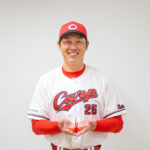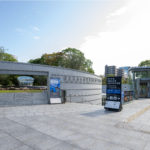Column: The Physicians’ StruggleConfronting Unprecedented Tragedy
Introduction
“The ‘pika-don’ bomb that dropped on Hiroshima is strange. People who are fine suddenly drop dead. I wonder why…”1) Keiji Nakazawa, a manga artist, portrayed this as one of his earliest memories of the hypocenter in his autobiographical work Barefoot Gen. There were enormous numbers of dead people, people with near-fatal injuries, and people who looked healthy at first glance but then lost their hair, developed red blotches on their faces and bodies, coughed up blood, and suddenly died. The sight that Gen and others saw was what many people who witnessed the bombing saw. These unprecedented abnormal situations also gave a profound shock to the physicians providing treatment.
1 War and Physicians
In November 1944, toward the end of the Pacific War, building demolitions started in Hiroshima City to create firebreaks in preparation for American air raids. Residents also started evacuating from the city. This raised concerns in the prefectural government that relief measures during air raids would be compromised, so the Air Defense Work Order was issued, preventing physicians from evacuating from the city. Thus, just before the bomb dropped, there were 298 physicians still in Hiroshima City.2)
2 Physicians’ Experience Being A-bombed
Michihiko Hachiya, director of the Hiroshima Communications Hospital, was injured from the atomic bomb while at home in Hakushima and received stitches at his hospital. On the following day, August 7, 1945, one of his subordinates came from Hatsukaichi (located west of Hiroshima City) to visit him in the hospital and told him of the tragedy in the city. “In the south, everything has burned down up to the Takanobashi area, and a few houses around the Red Cross Hospital remain unburned. The Red Cross Hospital wasn’t burned, and the Ujina area escaped the fire. I visited the Red Cross Hospital. It was flooded with patients both inside and outside the hospital buildings. Dead bodies lined the roadsides along the streetcar track in front of the hospital, all the way from that area to the Miyuki Bridge. Charred bodies were crouched in the streetcars around Kawaya-cho and Kamiya-cho. There were many charred bodies in that area. There was still smoke coming from building windows, and there are charred bodies in all directions. It’s horrible; water tanks are filled with dead people. They probably failed to escape.”3)
His story was even more gruesome than Hachiya had imagined. Like Hachiya, many physicians in Hiroshima suffered from the bomb. Of the 298 physicians in the city at the time, 60 died and 90% were affected.4) Of the physicians who provided relief for the injured, there were only 28 physicians who were uninjured. Dentists, pharmacists, and nurses also suffered as well. The healthcare professionals who were to be in charge of providing treatment for the injured and sick suffered catastrophic damages.
3 Confronting “A-bomb Diseases”
There was a plan during the war to create first-aid stations at elementary schools in case of air raids, but many schools in the city were badly damaged. In this situation, the Public Health Division of the Hiroshima Prefectural Government designated the areas where many critically ill patients had gathered as temporary relief stations and dispatched relief staff and medicine. Fifty three of these relief stations were hurriedly set up directly after the bombing. Rescue teams came to help, not only from rural districts in the prefecture but also from the neighboring prefectures such as Yamaguchi and Shimane, and all the way from Hyogo, Osaka and other prefectures, and provided aid for the injured.5)
The majority of the private medical practitioners in the city were seriously affected, so the injured flooded major hospitals such as the Hiroshima Red Cross Hospital and the Hiroshima Communications Hospital.6) The injured physicians fulfilled their duties and treated their patients. In the confusion following the bombing there was a serious shortage of medicine. At first, applying Mercurochrome or oil was the only treatment they could give to burned and injured people. It was impossible to provide any appropriate care.7)
Meanwhile, seemingly healthy persons with no injuries were suddenly dying both inside and outside the hospitals, and soon a rumor spread in the city that one would die if they breathed in the gas in Hiroshima. Even physicians suspected that the American forces had dropped poison-gas bombs.8) Tsurayuki Asakawa, director of the Department of Internal Medicine at the Hiroshima Red Cross Hospital, said that it was initially unknown why persons without injury were dying. Then, he was startled by blood tests showing a sharp drop in white blood cells. It was an acute radiation syndrome, or a so-called “A-bomb disease.” Fumio Shigeto, deputy director at the same hospital (he had also suffered injuries to his head from the bomb at the east exit of Hiroshima Station), had studied radiology since his graduate school days and had treated leukemic patients, but even he could not immediately connect the symptoms of his patients to radiation.9) The physicians in Hiroshima were forced to treat “A-bomb diseases,” which humanity had never experienced before. It was “a continual fight for the physicians, who had started late and always fell behind.”10)
In Closing
Of the 2,370 healthcare professionals in Hiroshima City, 91% of them (2,168) were impacted by the bomb. Though they were also injured, they continued to offer treatment. In treating the wounded with limited medical supplies, they groped their way forward to deal with the “A-bomb diseases,” symptoms that humanity had never known. The passionate efforts of the physicians in Hiroshima, who examined A-bomb survivors every day while continuing to patiently search for effective treatment methods, led to the establishment of the Atomic-bomb Survivors Hospital in September 1956, and promoted medical care for A-bomb survivors. Today, the Monument for the A-bomb Victims, also called “Hands in Prayer,” erected in August 1960 by the Hiroshima City Medical Association for the physicians and medical professionals who died from the atomic bombing, stands on the Peace Boulevard in the center of the city. It continues to quietly tell the history of the hardship these physicians faced.
(Hitoshi Nagai)
Notes
1. Nakazawa, Keiji. Hadashi no Gen (Barefoot Gen). Vol. 2, Chobunsha, 1975: p. 40.
2. Hiroshima Atomic Bomb Casualty Council (Ed.). Hiroshima Genbaku Iryoshi (History of Medical Care for A-bomb Survivors in Hiroshima). Hiroshima Atomic Bomb Casualty Council, 1961: pp. 9 – 11.
3. Diary of Michihiko Hachiya: August 7, 1945 entry. In Hachiya, Michihiko. Hiroshima Nikki (Hiroshima Diaries, newly bound edition). Hosei University Press, 2003: p. 19.
4. Hiroshima Atomic Bomb Casualty Council (1961). op. cit., pp. 9 – 10.
5. Ibid., pp. 144 – 148. Hiroshima Atomic Bomb Casualty Council (Ed.). Hibakusha to Tomoni–Zoku Hiroshima Genbaku Iryoshi (Hiroshima A-bomb Medical Care History 2 – Together with A-bomb Survivors). Hiroshima Atomic Bomb Casualty Council, 1969: p.50.
6. Hiroshima Atomic Bomb Casualty Council (1961). op. cit., P. 13.
7. Diary of Michihiko Hachiya: August 7, 1945 entry. In Hachiya, Michihiko. op. cit., p. 11.
8. Shigeto, Fumio. and Oe, Kenzaburo. Taiwa Genbakugo no Ningen (Dialogue on People after the A-Bomb). Shinchosha, 1971: p. 87. Diary of Michihiko Hachiya: August 12, 1945 entry. In Hachiya, Michihiko. op. cit., pp. 64 – 65.
9. Hiroshima Atomic Bomb Casualty Council (1961). op. cit., p. 323. Shigeto and Oe. op. cit., pp. 46 – 47, 53, 72.
10. Oe, Kenzaburo. Hiroshima Noto (Hiroshima Notes). Iwanami Shoten, 1966: p. 132.






